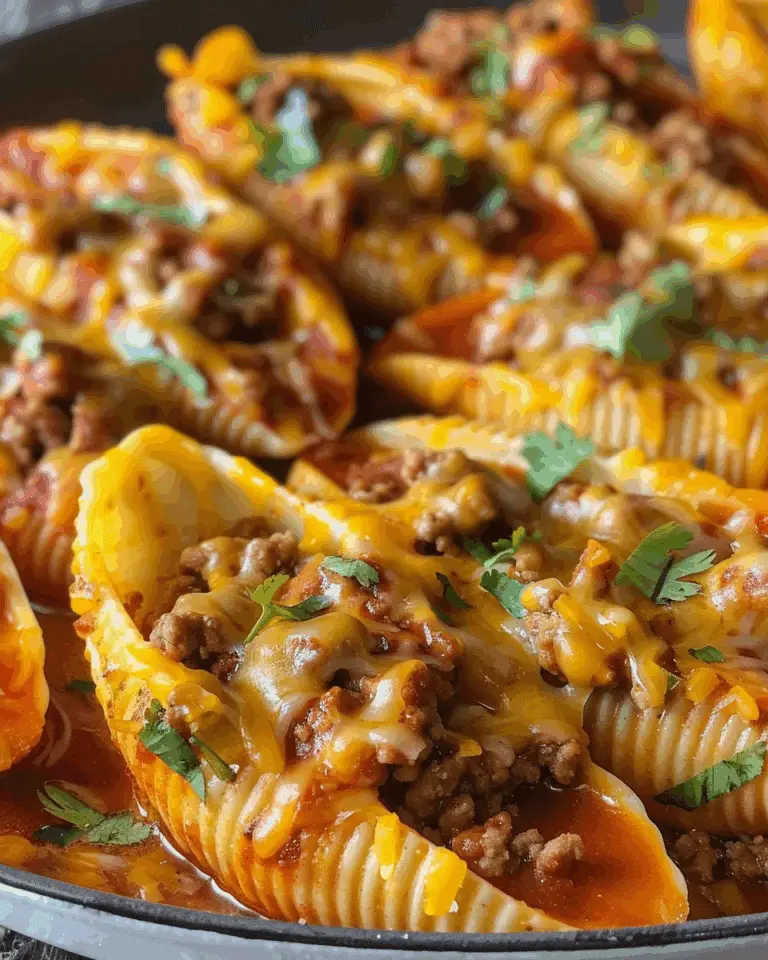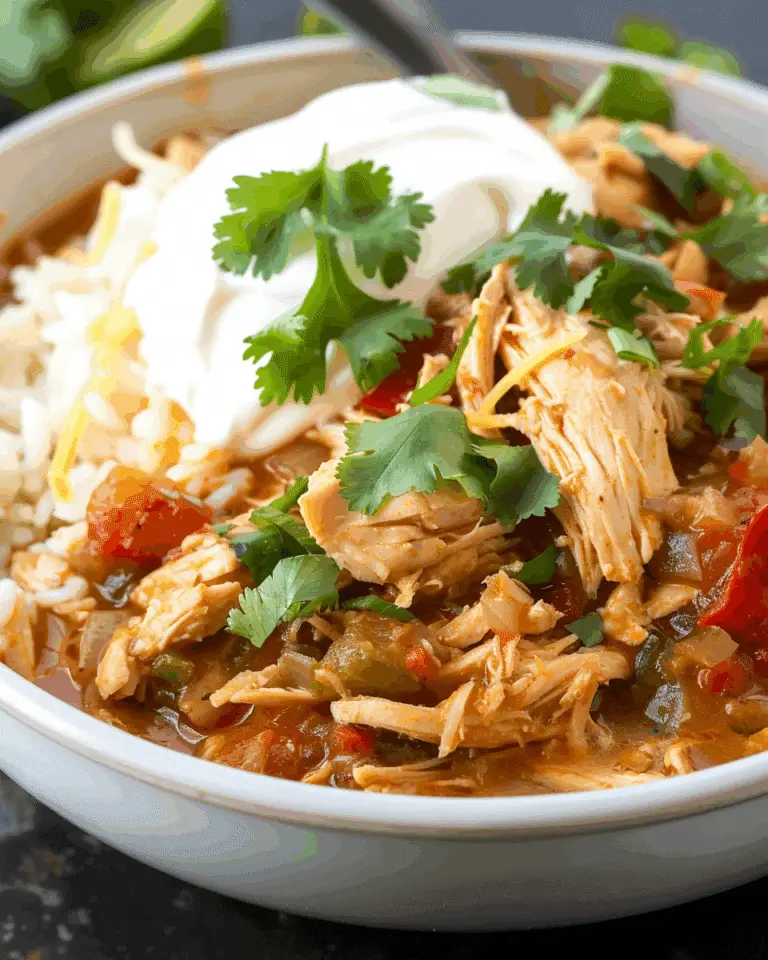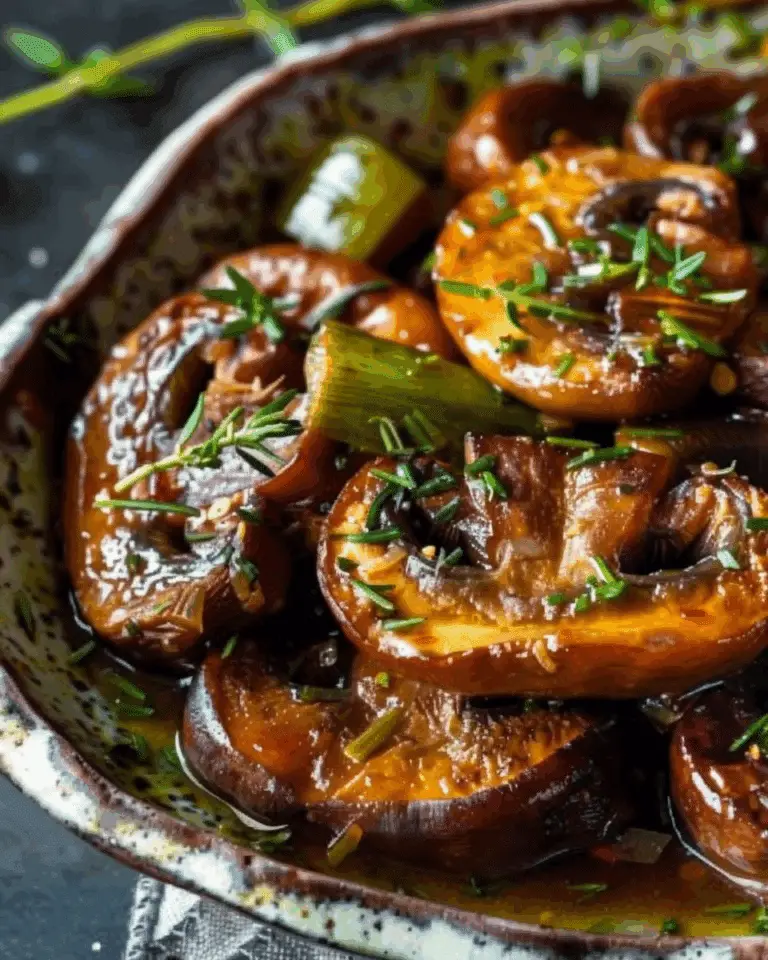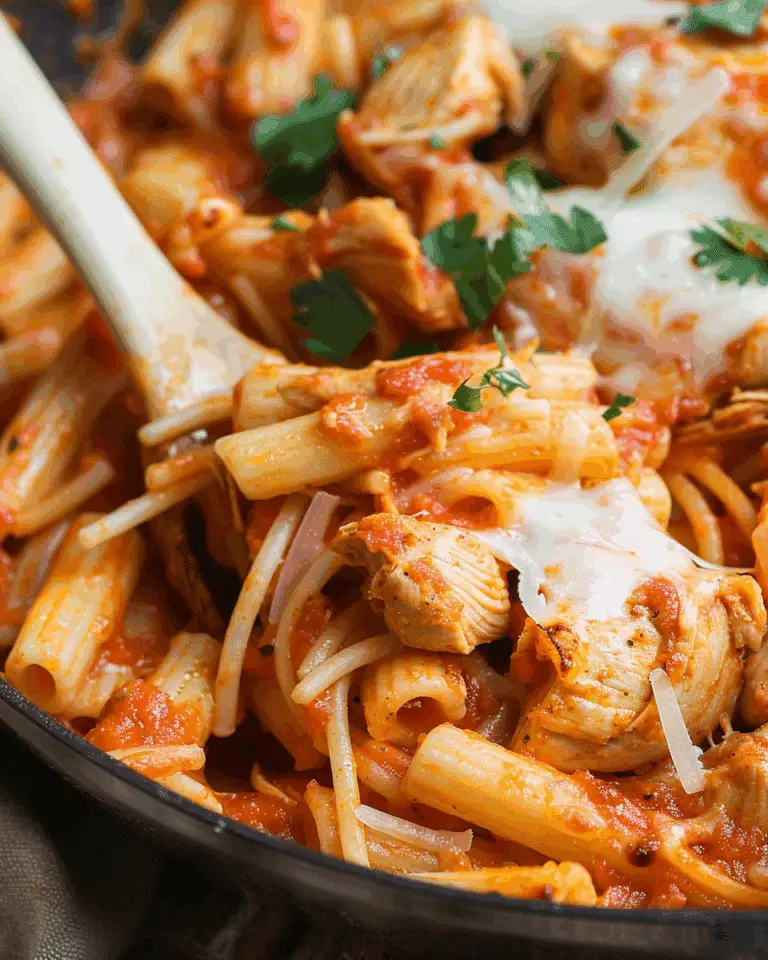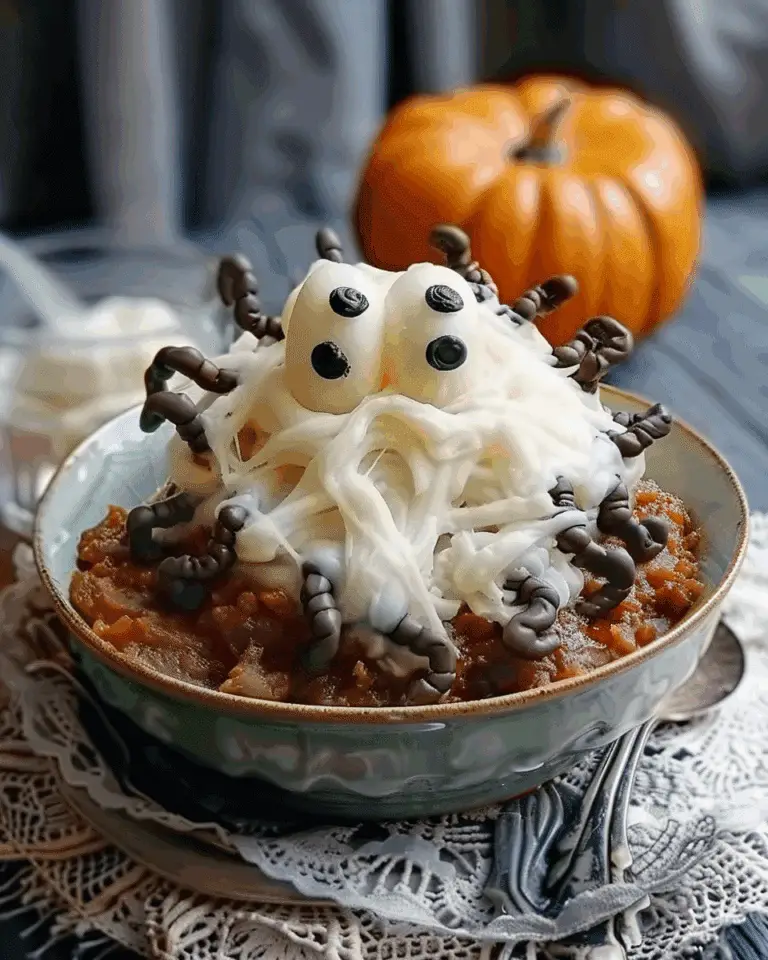I build this pasta around deeply caramelized onions—jammy, sweet-savory strands that melt into a glossy sauce, finished with Parmesan, a splash of acidity, and a hint of heat. I keep it simple but layered so every twirl tastes rich without feeling heavy.
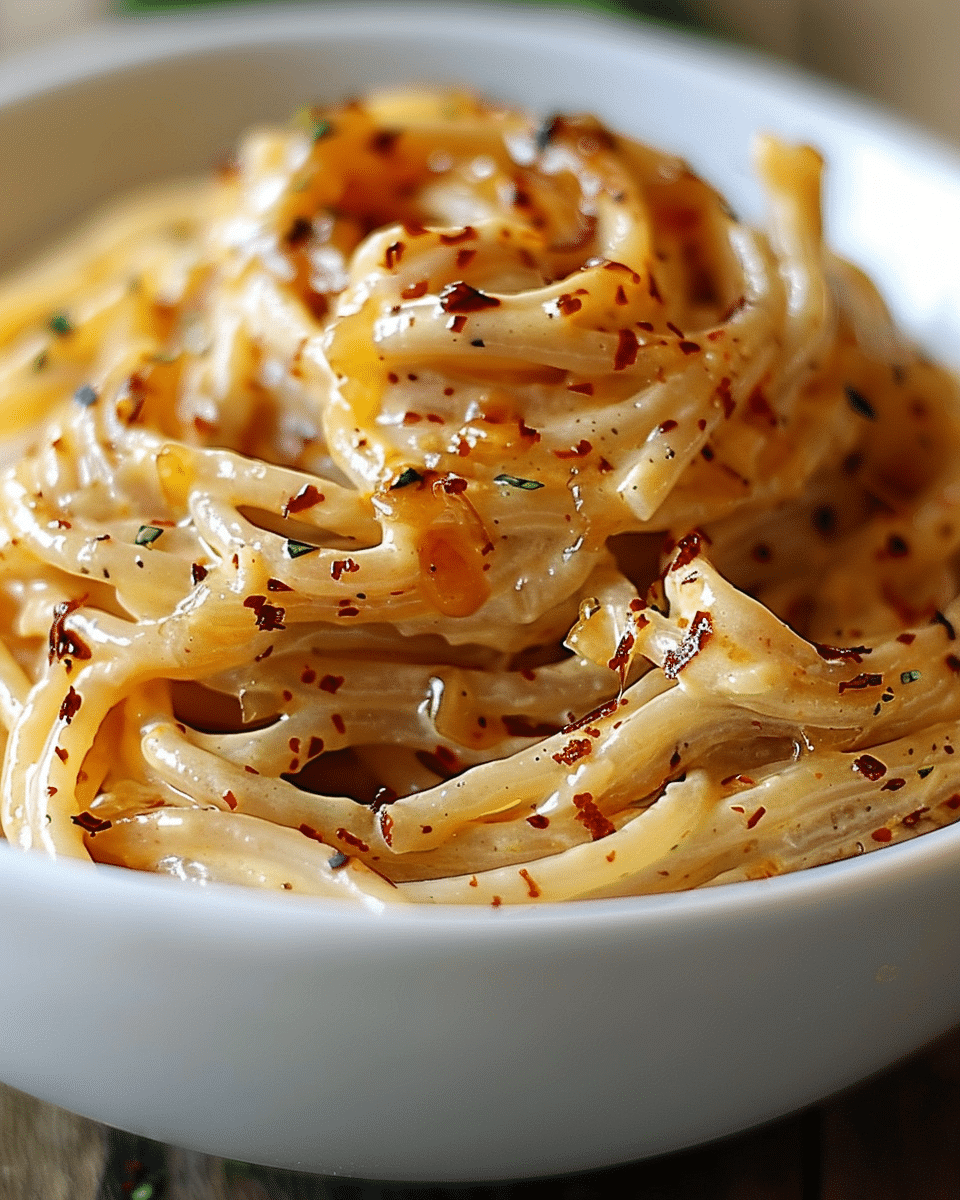
Why You’ll Love This Recipe
I slowly caramelize a heap of onions until they’re mahogany and jammy, I deglaze to capture every browned bit, and I use starchy pasta water to make a silky, restaurant-style emulsion. I finish with cheese and a squeeze of lemon so the sauce stays balanced and bright.
Ingredients
(Here’s a tip: Check out the full list of ingredients and measurements in the recipe card below.)
-
Olive oil
-
Unsalted butter
-
Yellow onions, thinly sliced (a big mound)
-
Garlic, finely sliced or minced
-
Fresh thyme or rosemary (optional)
-
Red pepper flakes (optional)
-
Dry white wine or low-sodium stock (for deglazing)
-
Balsamic or sherry vinegar (just a splash)
-
Pasta (bucatini, tagliatelle, or spaghetti)
-
Finely grated Parmesan (or Pecorino)
-
Fresh lemon (zest and juice)
-
Fresh parsley or chives, chopped (optional)
-
Fine sea salt and black pepper
-
Optional umami boosters: 1–2 anchovy fillets or 1 teaspoon white miso
-
Optional creaminess: mascarpone or a small splash of heavy cream
Directions
-
I prep the onions first: I halve them pole-to-pole, trim the ends, peel, and slice into thin half-moons.
-
I start them low and slow: in a wide heavy skillet, I warm olive oil and butter over medium-low. I add the onions with a big pinch of salt and cook, stirring every few minutes, until soft and translucent, about 15 minutes.
-
I caramelize patiently: I continue cooking 20–30 minutes more, adjusting heat to prevent burning. If brown bits build up, I splash in water and scrape them back into the onions. I want them deep golden and jammy.
-
I build flavor: I push the onions to one side and add garlic, red pepper flakes, and herbs to the cleared spot for 30–60 seconds. If I’m using anchovy or miso, I stir it in now until dissolved.
-
I deglaze: I pour in wine (or stock), scraping up all the browned bits, and simmer until nearly evaporated. I add a small splash of vinegar for brightness.
-
Meanwhile, I boil the pasta in well-salted water until just shy of al dente. I reserve about 1 1/2 cups of the starchy water.
-
I make it saucy: I add a big splash of pasta water to the onions and bring to a lively simmer so it emulsifies.
-
I marry pasta and sauce: I transfer pasta to the skillet, add Parmesan by the handful, and toss vigorously, adding more pasta water as needed until the sauce turns glossy and clings.
-
I finish to taste: I add lemon zest and a squeeze of juice, black pepper, herbs, and, if I’m craving extra richness, a spoonful of mascarpone or a tiny splash of cream.
-
I serve immediately with extra Parmesan.
Servings and timing
I get 4 generous servings. I spend about 10 minutes slicing, 35–45 minutes caramelizing and building the sauce, and 8–10 minutes cooking pasta—about 55–65 minutes total.
Variations
-
French-onion style: I swap part of the wine for beef stock and finish with a blend of Gruyère and Parmesan.
-
Mushroom umami: I sauté sliced cremini or shiitakes after the onions caramelize, then deglaze.
-
Bacon or pancetta: I crisp 100 g diced pancetta first, cook the onions in the fat (plus a touch of oil), and sprinkle the crispy bits on top.
-
Vegan: I skip butter and cheese, use olive oil only, miso for umami, and finish with a knob of vegan butter for sheen.
-
Spicy Calabrian: I fold in a teaspoon of Calabrian chili paste with the garlic for a gentle burn.
-
Creamier: I stir in 2–3 tablespoons mascarpone at the end for a velvet finish.
storage/reheating
I refrigerate leftovers in an airtight container for up to 4 days. For best texture, I reheat in a skillet over medium heat with a splash of water or stock, tossing until the sauce loosens and turns glossy again. I avoid the microwave if I can—it can make the pasta gummy. The caramelized onions themselves freeze beautifully up to 3 months; I thaw and use them to make a fresh batch fast.
FAQs
How do I caramelize onions faster without burning them?
I keep the heat at medium-low and add a teaspoon or two of water whenever the pan looks dry. If I’m in a rush, I add a tiny pinch (⅛ teaspoon) of baking soda to jump-start browning, stirring constantly and watching closely.
Why did my onions turn bitter?
I likely used heat that was too high or didn’t deglaze often enough. I fix it with a splash of water or stock to dissolve any scorched bits, then add a touch of vinegar and a pinch of sugar to rebalance.
Which onions work best?
I reach for yellow onions for balanced sweetness and savoriness. Sweet onions caramelize nicely but can end up one-note; I add an extra pinch of salt and a splash of vinegar when using them.
Do I need wine?
I don’t; stock or even water works. I still add a small splash of vinegar or lemon to bring back the brightness that wine would have provided.
How do I get that glossy, clingy sauce?
I toss the pasta with the onions over heat, adding starchy pasta water in small additions and showering in cheese while I toss. The starch and fat emulsify into a silky coating.
Conclusion
I let onions take the lead—slowly caramelized until sweet and savory—then I build a simple pan sauce that hugs every strand. With a few smart splashes and a handful of cheese, I turn pantry staples into a deeply comforting pasta that tastes far more luxurious than the ingredient list suggests.
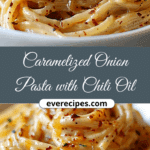
Caramelized Onion Pasta
5 Stars 4 Stars 3 Stars 2 Stars 1 Star
No reviews
- Author: Evee
- Total Time: 55–65 minutes
- Yield: 4 servings
- Diet: Vegetarian
Description
A comforting pasta dish built around deeply caramelized onions, tossed with starchy pasta water and Parmesan for a silky, rich-yet-balanced sauce. Finished with lemon, herbs, and a touch of heat, it’s a pantry-friendly, flavor-packed dinner.
Ingredients
2 tablespoons olive oil
2 tablespoons unsalted butter
4 large yellow onions, thinly sliced
2–3 cloves garlic, finely sliced or minced
1–2 teaspoons fresh thyme or rosemary (optional)
1/4 teaspoon red pepper flakes (optional)
1/2 cup dry white wine or low-sodium stock
1 tablespoon balsamic or sherry vinegar
400 g (14 oz) pasta (bucatini, tagliatelle, or spaghetti)
1 cup finely grated Parmesan (or Pecorino), plus more for serving
1 lemon (zest and juice)
Fresh parsley or chives, chopped (optional)
Fine sea salt and black pepper, to taste
Optional: 1–2 anchovy fillets or 1 teaspoon white miso
Optional: 2–3 tablespoons mascarpone or a splash of heavy cream
Instructions
- Halve, peel, and thinly slice onions into half-moons.
- Heat olive oil and butter in a wide skillet over medium-low heat. Add onions with a big pinch of salt. Cook, stirring occasionally, until soft and translucent, about 15 minutes.
- Continue cooking onions for 20–30 minutes, adjusting heat as needed to avoid burning. Splash in water as needed to deglaze and prevent sticking. Onions should be deep golden and jammy.
- Push onions to one side. In the cleared space, add garlic, red pepper flakes, and herbs. Cook 30–60 seconds. Stir in anchovy or miso if using.
- Deglaze with wine or stock, scraping up browned bits. Simmer until mostly evaporated. Add vinegar for brightness.
- Meanwhile, cook pasta in well-salted water until just shy of al dente. Reserve 1 1/2 cups pasta water.
- Add a splash of pasta water to the onion mixture and bring to a lively simmer.
- Transfer pasta to skillet. Add Parmesan and toss vigorously, adding more pasta water as needed until sauce is glossy and coats the pasta.
- Finish with lemon zest and juice, black pepper, herbs, and optional mascarpone or cream for added richness.
- Serve immediately with extra Parmesan on top.
Notes
Use a mix of olive oil and butter for balanced richness and flavor.
Caramelize onions slowly to avoid bitterness—add water as needed and stir regularly.
Toss pasta with onions and cheese over heat for best emulsification.
Try variations like pancetta, mushrooms, or Gruyère for different flavor profiles.
Onions can be pre-caramelized and frozen for faster future meals.
- Prep Time: 10 minutes
- Cook Time: 45–55 minutes
- Category: Main Course
- Method: Stovetop
- Cuisine: Italian-Inspired
Nutrition
- Serving Size: 1/4 of recipe
- Calories: 480
- Sugar: 7g
- Sodium: 320mg
- Fat: 18g
- Saturated Fat: 7g
- Unsaturated Fat: 10g
- Trans Fat: 0g
- Carbohydrates: 64g
- Fiber: 4g
- Protein: 15g
- Cholesterol: 30mg

